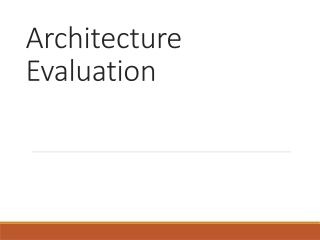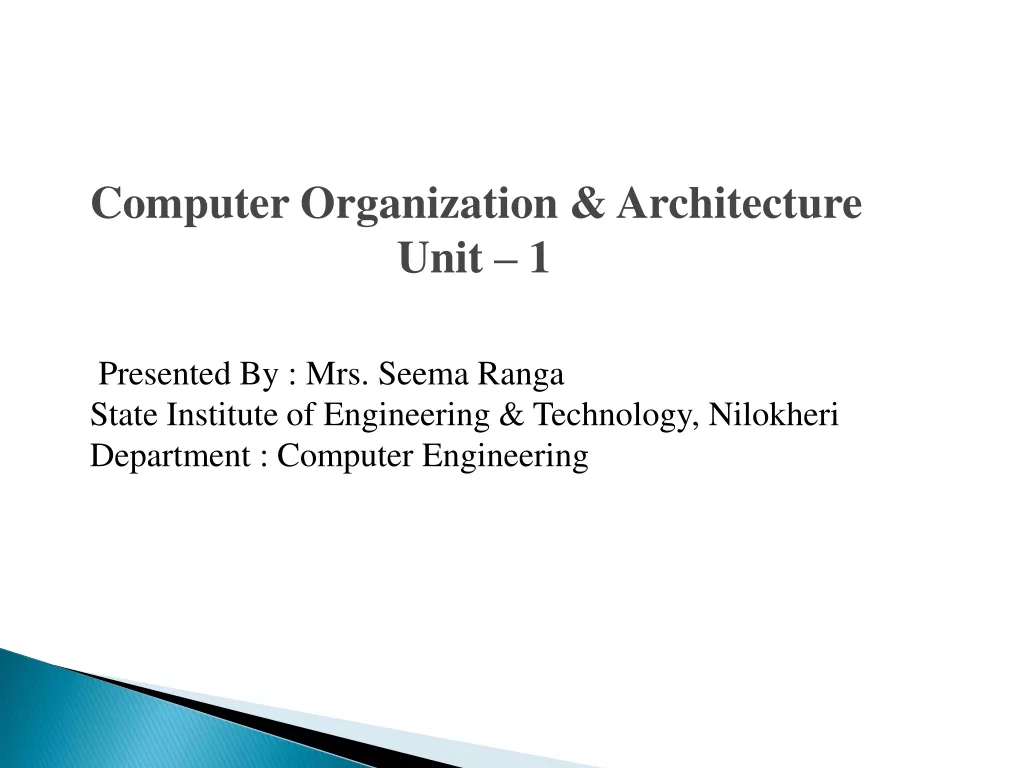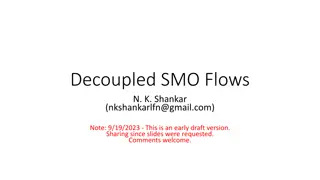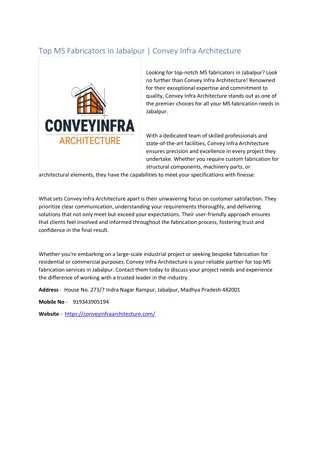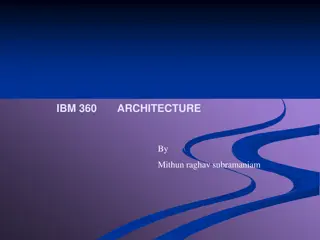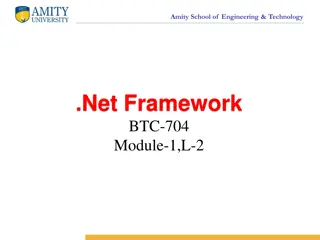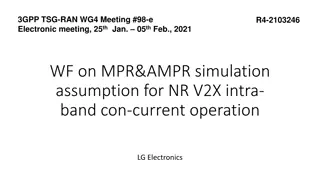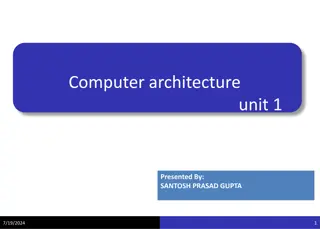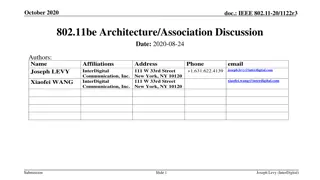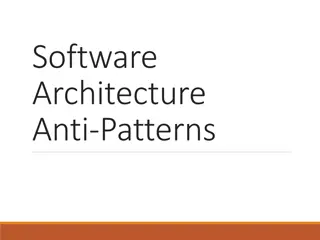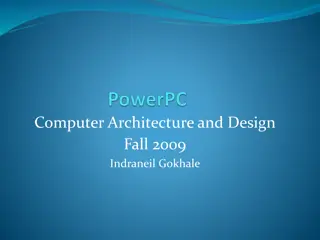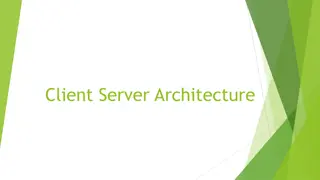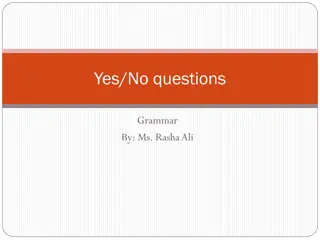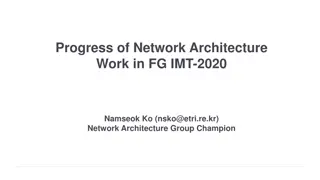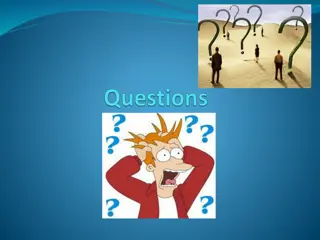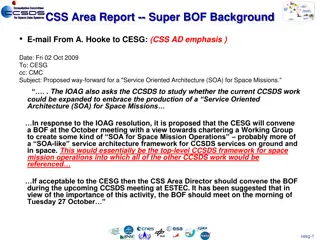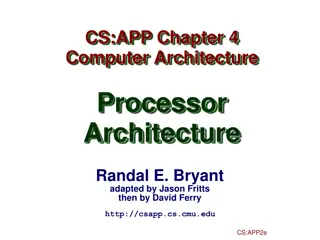Architecture questions concerning LC
This document, authored by Nancy Lee from Signify, delves into architecture questions regarding IEEE 802.11-21/1498r0. It provides insights and analyses related to the specified architecture, offering valuable information for individuals interested in this field.
Download Presentation

Please find below an Image/Link to download the presentation.
The content on the website is provided AS IS for your information and personal use only. It may not be sold, licensed, or shared on other websites without obtaining consent from the author.If you encounter any issues during the download, it is possible that the publisher has removed the file from their server.
You are allowed to download the files provided on this website for personal or commercial use, subject to the condition that they are used lawfully. All files are the property of their respective owners.
The content on the website is provided AS IS for your information and personal use only. It may not be sold, licensed, or shared on other websites without obtaining consent from the author.
E N D
Presentation Transcript
September 2021 doc.: IEEE 802.11-21/1498r0 Architecture questions concerning LC Date: 2021-09-13 Authors: Name Nancy Lee Affiliations Signify Address Phone email nancy.lee@signify.com matthias.wendt@signify.com Matthias Wendt Signify Submission Slide 1 Nancy Lee, Signify
September 2021 doc.: IEEE 802.11-21/1498r0 Abstract This contribution discusses some architecture questions concerning LC for P802.11bb. Submission Slide 2 Nancy Lee, Signify
September 2021 doc.: IEEE 802.11-21/1498r0 Outline About 11bb Connecting optical front end to baseband RF vs baseband interface Channelization implications Multiple optical front ends Light communication (LC) STA as a component of the IEEE 802.11 architecture LC STA vs non-HT STA, QoS STA, HT STA, VHT STA, and HE STA LC PHY modes vs. OFDM PHY, HT PHY, VHT PHY, and HE PHY Submission Slide 3 Nancy Lee, Signify
September 2021 doc.: IEEE 802.11-21/1498r0 ABOUT 11BB Submission Slide 4 Nancy Lee, Signify
September 2021 doc.: IEEE 802.11-21/1498r0 Light communications (LC) reuses existing MAC and PHY LC MAC is the same or a subset of existing 802.11 MAC, except aspects that don t translate to optical domain are excluded LC PHY has 4 modes, each is largely identical to an existing 802.11 PHY in REVme, except aspects that don t translate to optical domain are excluded. LC CM PHY mode based on Clause 17 OFDM PHY (except only a single 20 MHz channel is allowed) LC HT PHY mode based on Clause 19 HT PHY LC VHT PHY mode based on Clause 21 VHT PHY LC HE PHY mode based on Clause 27 HE PHY Submission Slide 5 Nancy Lee, Signify
September 2021 doc.: IEEE 802.11-21/1498r0 Motivation for reuse Motivation is to allow implementation using commercial 802.11n, ac, or ax chipsets, with the expectation that: An LC STA using an 11n chip can support LC CM PHY, LC HT PHY An LC STA using an 11ac chip can support LC CM PHY, LC HT PHY, LC VHT PHY An LC STA using an 11ax chip can support LC CM PHY, LC HT PHY, LC VHT PHY, and LC HE PHY Submission Slide 6 Nancy Lee, Signify
September 2021 doc.: IEEE 802.11-21/1498r0 STA definition 4.3 (Components of the IEEE Std 802.11 architecture) specifies STA types (e.g., QoS STA, non-HT STA, HT STA, VHT STA, HE STA) in terms of supported MAC and PHY clauses, e.g.: 4.3.13: An HT STA supports HT features as identified in Clause 10 and Clause 19. An HT STA operating in the 5 GHz band supports transmission and reception of frames that are compliant with mandatory PHY specifications as defined in Clause 17. 11bb adds a similar subclause 4.3.30 that defines an LC STA as: A LC STA supports features identified in Clauses 10 (MAC sublayer functional description), 11 (MLME), 12 (Security), 31 (Light Communication (LC) MAC specification), and 32 (Light Communication (LC) PHY specification). 11bb also adds definitions in Clause 3 including: light communications station (LC STA): A STA that interfaces to the light medium. In systems using light communications, the antenna connector is a virtual point representing the aggregate output of (or input to) the optical front-end, which includes any processing gain of the optical front-end subsystem. Slide 7 Submission Nancy Lee, Signify
September 2021 doc.: IEEE 802.11-21/1498r0 Note: This contribution only discusses transmit chain. The same issues apply to receive chain. CONNECTING OPTICAL FRONT END TO TX BASEBAND Submission Slide 8 Nancy Lee, Signify
September 2021 doc.: IEEE 802.11-21/1498r0 HT/VHT/HE PPDU encoding process includes upconversion to RF Transmitter block diagrams in 802.11 include Analog and RF blocks (see examples at right) OFDM/HT/VHT/HE PHY PPDU encoding processes in 802.11 end with: Analog and RF: Upconvert the resulting complex baseband waveform associated with each transmit chain to an RF signal according to the center frequency of the desired channel and transmit (e.g., subclauses of 27.3.6) Example transmitter block diagram from 17.3.8.2 in 802.11-2020 Example transmitter block diagram from 27.3.5 in 802.11ax-2021 Submission Slide 9 Nancy Lee, Signify
September 2021 doc.: IEEE 802.11-21/1498r0 LC transmitter block diagram, in theory In LC, RF upconversion is replaced by Intensity Modulation (IM): Channels are defined at baseband A baseband channel is conveyed by varying the current driving the OFE. This varies the intensity of the transmitted light across the entire bandwidth of the optical transmitter (e.g., LED). A DC bias is added before feeding the signal to the LED to ensure the current is always positive because only positive current can generate photons. Ideally, the complex baseband waveform output of the quadrature modulator should feed the DC bias + OFE. Baseband channel Transmitter block diagram from 32.3.3.3.2 in 11bb D0.6 Submission Slide 10 Nancy Lee, Signify
September 2021 doc.: IEEE 802.11-21/1498r0 LC transmitter block diagram, in practice Existing 802.11 chipsets are integrated, so output 2.4/5/6 GHz RF band Goal of 11bb (at least for now) is to allow implementation now, i.e. using existing chipsets This requires downconversion from RF back to baseband Does 11bb need to include an example showing up/down conversion? (Is this implementation or architecture?) Example implementation from 11-20/1449r3 (DC bias not shown) Submission Slide 11 Nancy Lee, Signify
September 2021 doc.: IEEE 802.11-21/1498r0 Downconversion channelization issue Existing chipsets may operate at 2.4, 5, or 6 GHz RF. Each has different RF channelization If chipset configured as usual (unaware of LC OFE), interoperability problems arise So 11bb defines baseband channels and operating classes for LC (see next slide) Works for possible future chipsets that support LC without downconversion Channels 1 to 61 (contiguous 320 MHz wide range, aligned with 6 GHz band channel numbering) First 20 MHz wide channel has center frequency = 26 MHz, 5 MHz steps 1 operating class per baseband channel bandwidth But would an existing chipset operating at 2.4 GHz or 5 GHz RF be able to support the LC starting frequency, channel numbering, and operating classes? Example: Would a chipset at 5 GHz be able to shift its channel numbering by changing its starting frequency from 5.000 GHz to 5.175 GHz? Example: 5 GHz channels are noncontiguous. Would a 5 GHz radio support 61 contiguous channels? For more details see 11-21/381r0 Submission Slide 12 Nancy Lee, Signify
September 2021 doc.: IEEE 802.11-21/1498r0 Submission Slide 13 Nancy Lee, Signify
September 2021 doc.: IEEE 802.11-21/1498r0 MULTIPLE OPTICAL FRONT ENDS Submission Slide 14 Nancy Lee, Signify
September 2021 doc.: IEEE 802.11-21/1498r0 Multiple OFEs The basic block diagram (slide 16) applies to all LC PHY modes LC HE PHY also gives an example of multiple transmitters (shown) and receivers (not shown) Unclear what the relationship is to CM light interface. Should the relationship be explained? Unclear what drives each OFE, are these identical IQ waveforms? Different MIMO streams or channels? Should these be specified? But per 32.3.6.1, LC supporting MIMO with separate spatial streams is out of scope of this specification. Per 32.3.6.3.3, the OFEs may all operate at the same wavelength or different wavelengths How do these wavelengths relate to the IQ waveforms? Should multiple TX/RX also apply to LC HT and LC VHT? Multiple OFEs from 32.3.6.3.3 in 11bb D0.6 Submission Slide 15 Nancy Lee, Signify
September 2021 doc.: IEEE 802.11-21/1498r0 LIGHT COMMUNICATION (LC) STA Submission Slide 16 Nancy Lee, Signify
September 2021 doc.: IEEE 802.11-21/1498r0 LC STA and LC PHY modes Existing 802.11 defines STA types, e.g. non-HT STA, QoS STA, HT STA, VHT STA, and HE STA Some existing (REVme) MAC and PHY clauses specify different behavior depending on STA type, for example 10.15: An HT STA shall not transmit a frame in a PSDU with the TXVECTOR parameter FORMAT set to HT_MF or HT_GF and TXVECTOR parameter FEC_CODING set to LDPC_CODING unless the RA of the frame corresponds to an HT STA . A VHT STA shall not transmit a frame in a PSDU with the TXVECTOR parameter FORMAT set to VHT and TXVECTOR parameter FEC_CODING set to LDPC_CODING unless 26.3.1: An HE STA can negotiate the use of different levels of dynamic fragmentation But LC STA, LC MAC and LC PHY texts don t explain whether these existing STA types (and therefore behaviors required of existing STA types) apply to LC (see backup) Submission Slide 17 Nancy Lee, Signify
September 2021 doc.: IEEE 802.11-21/1498r0 Behavior depends on STA type LC STA behavior depends on which of the four LC PHY modes is in use Where and how to properly specify which behavior applies to an LC STA using a given LC PHY mode? Define entities such as LC HT STA and globally change in existing MAC and PHY clauses? E.g., Globally change an HT STA to an HT STA or LC HT STA Add text in LC MAC clause and LC PHY mode subclauses? E.g., HT STA behavior in Clause 10 applies to an LC MAC that supports the LC HT PHY mode HE STA behavior in Clause 26 applies to an LC STA operating with LC HE PHY mode How to address requirements for QoS STAs? Submission Slide 18 Nancy Lee, Signify
September 2021 doc.: IEEE 802.11-21/1498r0 BACKUP Submission Slide 19 Nancy Lee, Signify
September 2021 doc.: IEEE 802.11-21/1498r0 LC HE MAC: Where and how to specify which behavior applies to LC STA for a given LC PHY mode? 31.2 states that the LC MAC that supports the LC HE PHY mode shall be the same as Clause 26 (High Efficiency (HE) MAC specification). Perhaps amend 31.2 to same as HE STA behavior in Clause 26 ? Because Clause 26 extensively specifies behavior of an HE STA. Example: 26.3.1: An HE STA can negotiate the use of different levels of dynamic fragmentation Submission Slide 20 Nancy Lee, Signify
September 2021 doc.: IEEE 802.11-21/1498r0 LC MAC: Where and how to specify which behavior applies to LC STA for a given LC PHY mode? 31.1 states that an LC STA uses (a subset of) the MAC functions defined in Clause 10 (MAC sublayer functional description), the MLME functions defined in Clause 11 (MLME), and the security functions defined in Clause 12 (Security). Define entities such as LC HT STA and globally change e.g. an HT STA to an HT STA or LC HT STA ? Add in 31.1 that e.g. HT STA behavior in Clause 10 applies to an LC MAC that supports the LC HT PHY mode ? How to address requirements for QoS STAs? Examples to address: 10.2.1: In a non-DMG non-CMMG non-S1G STA: ... The HCF is present in QoS STAs and absent otherwise. 10.15: An HT STA shall not transmit a frame in a PSDU with the TXVECTOR parameter FORMAT set to HT_MF or HT_GF and TXVECTOR parameter FEC_CODING set to LDPC_CODING unless the RA of the frame corresponds to an HT STA . A VHT STA shall not transmit a frame in a PSDU with the TXVECTOR parameter FORMAT set to VHT and TXVECTOR parameter FEC_CODING set to LDPC_CODING unless 11.38.1: A VHT STA has dot11VHTOptionImplemented equal to true. A STA that is a VHT AP or a VHT mesh STA declares its channel width capability in the VHT Capabilities element Submission Slide 21 Nancy Lee, Signify
September 2021 doc.: IEEE 802.11-21/1498r0 LC PHY modes: Where and how to specify which behavior applies to LC STA for a given LC PHY mode? See next 5 slides for LC PHY mode definitions in 11bb D0.6. Define entities such as LC VHT STA and globally change e.g. a VHT STA to a VHT STA or LC VHT STA ? Add for each LC PHY mode e.g. VHT STA behavior in Clause 21 applies to an LC STA that supports the LC VHT PHY mode ? Existing PHY clauses refer to existing STA types. Examples to address: 21.1.1: a VHT STA shall be capable of 21.2.5.1: A VHT STA logically contains Clause 17, Clause 19, and Clause 21 PHYs. The MAC interfaces to the PHYs via the Clause 21 PHY service interface, which in turn interacts with the Clause 17 and Clause 19 PHY service interfaces as shown in Figure 21-1, Figure 21-2, and Figure 21-3. 27.1.1: an HE STA shall be capable of 27.3.2.7 20: An HE AP operating in the 5 GHz or 6 GHz band shall be able to Submission Slide 22 Nancy Lee, Signify
September 2021 doc.: IEEE 802.11-21/1498r0 LC STA definition in 11bb D0.6 32.3.3 LC Common mode (LC CM) 32.3.3.1 Introduction Subclause 32.3.3 (LC Common mode (LC CM)) specifies the PHY entity when operating the LC PHY in the LC Common mode. The LC CM PHY is the same as Clause 17 (Orthogonal frequency division multiplexing (OFDM) PHY specification) PHY except when the specifications in subclause 32.3.3 supersede corresponding text in Clause 17 (Orthogonal frequency division multiplexing (OFDM) PHY specification). An LC STA shall support the mandatory features defined in Clause 17, except the following subclauses: 17.3.8.3 (Regulatory requirements), 17.3.8.4 (Operating channel frequencies), 17.3.9.3 (Transmit spectrum mask), 17.3.9.7.2 (Transmitter center frequency leakage), 17.3.10.3 (Adjacent channel rejection) and 17.3.10.4 (Nonadjacent channel rejection). Similar to the concept An HE STA is also a STA that supports the OFDM PHY defined in Clause 17 if operating in the 6 GHz band Submission Slide 23 Nancy Lee, Signify
September 2021 doc.: IEEE 802.11-21/1498r0 LC STA definition in 11bb D0.6 32.3.4 LC High Throughput (LC HT) mode 32.3.4.1 Introduction Subclause 32.3.4 (LC High Throughput (HT) mode) specifies the PHY entity when operating the LC PHY in the LC HT mode. The LC HT mode PHY shall be the same as Clause 19 (High-throughput (HT) PHY specification) except when the specifications in subclause 32.3.4 (LC High Throughput (LC HT) mode) supersede corresponding text in Clause 19 (High-throughput (HT) PHY specification). The following subclauses may not apply to the LC HT PHY mode: 19.3.12 (Beamforming), 19.3.14 (Regulatory requirements) and 19.3.15 (Channel numbering and channelization). Note: LC supporting MIMO with separate spatial streams is out of scope of this specification. No mention of LC STA or HT STA Submission Slide 24 Nancy Lee, Signify
September 2021 doc.: IEEE 802.11-21/1498r0 LC STA definition in 11bb D0.6 32.3.5 LC Very High Throughput (LC VHT) mode 32.3.5.1 Introduction Subclause 32.3.5 (LC Very High Throughput (VHT) mode) specifies the PHY entity when operating the LC PHY in the LC VHT mode. The LC VHT mode PHY shall be the same as Clause 21 (Very high throughput (VHT) PHY specification) except when the specifications in subclause 32.3.5 (LC Very High Throughput (LC VHT) mode) supersede corresponding text in Clause 21 (Very high throughput (VHT) PHY specification). The following subclauses in Clause 21 (Very high throughput (VHT) PHY specification) may not apply to the LC VHT PHY: 21.3.11 (SU-MIMO and DL-MU-MIMO Beamforming), 21.3.13 (Regulatory requirements) and 21.3.14 (Channelization). No mention of LC STA or VHT STA Submission Slide 25 Nancy Lee, Signify
September 2021 doc.: IEEE 802.11-21/1498r0 LC STA definition in 11bb D0.6 32.3.6 LC High Efficiency (LC HE) mode 32.3.6.1 Introduction Subclause 32.3.4 (LC High Efficiency (LC HE) mode) specifies the PHY entity when operating the LC PHY in the LC HE mode. The LC HE mode is the same as Clause 27 (High Efficiency (HE) PHY specification) except when the specifications in subclause 32.3.6 (LC High Efficiency (LC HE) mode) supersede corresponding text in Clause 27 (High Efficiency (HE) PHY specification). The following subclauses in 27.3 do not apply to the LC HE PHY: 27.3.16 (SU-MIMO and DL MU-MIMO beamforming), 27.3.23 (Channel numbering), 27.3.24 (Regulatory requirements). No mention of LC STA or HE STA Submission Slide 26 Nancy Lee, Signify
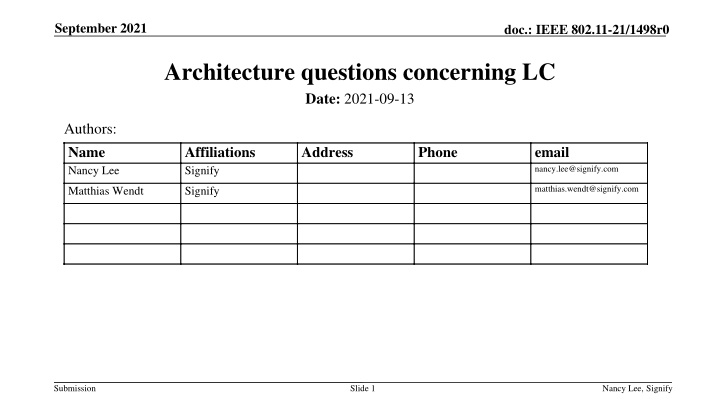

![❤Book⚡[PDF]✔ The Apollo Guidance Computer: Architecture and Operation (Springer](/thumb/21611/book-pdf-the-apollo-guidance-computer-architecture-and-operation-springer.jpg)
